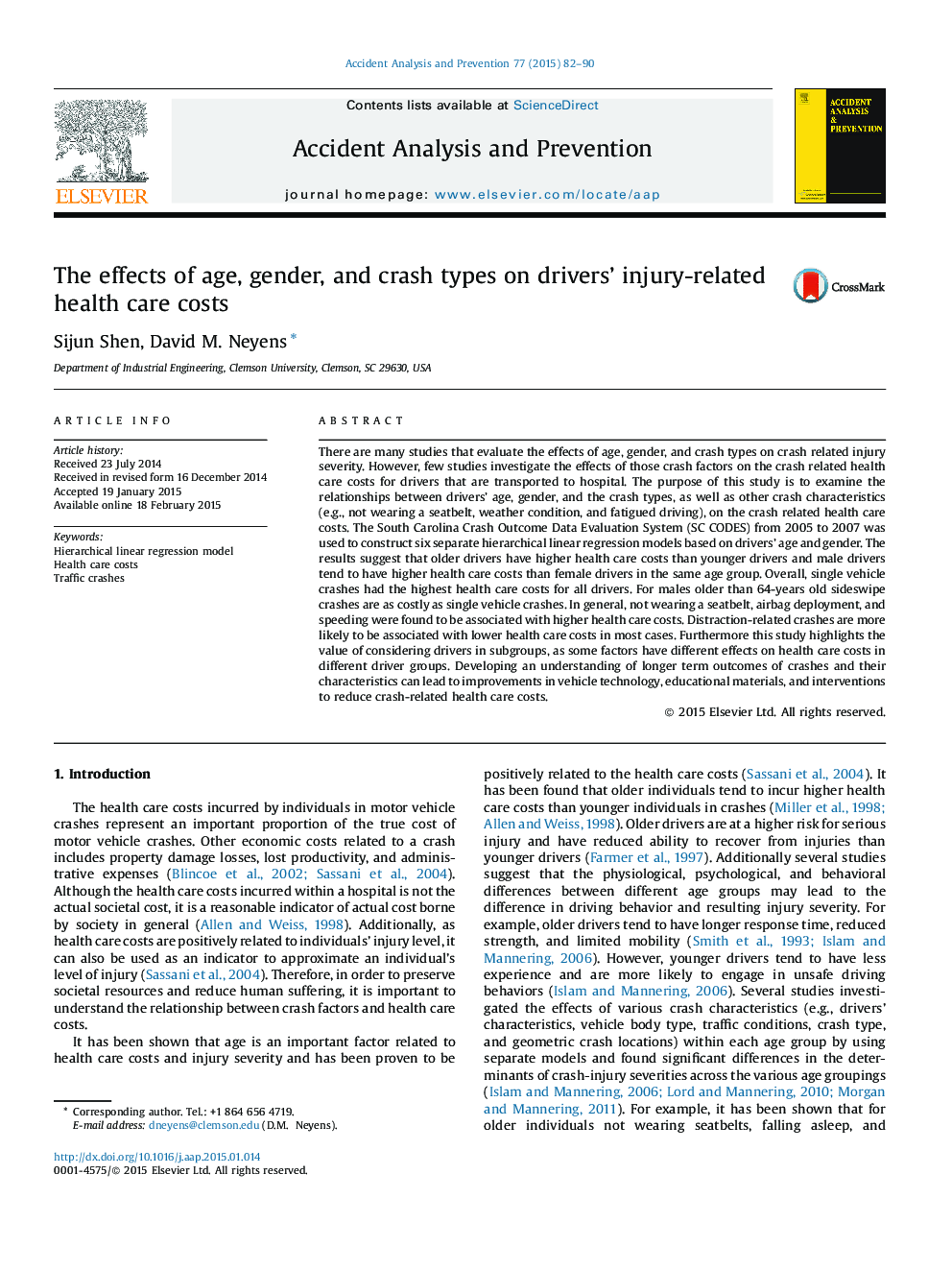| Article ID | Journal | Published Year | Pages | File Type |
|---|---|---|---|---|
| 572152 | Accident Analysis & Prevention | 2015 | 9 Pages |
•This study examined the relationships between drivers’ age, gender, and the crash types, as well as some other crash characteristics (e.g., not wearing a seatbelt, weather condition, and fatigued driving), on the crash related health care costs via a series of hierarchical linear regression models.•The South Carolina Crash Outcome Data Evaluation System (SC CODES) data from 2005 to 2007 were used for this study.•Older drivers in crashes have higher health care costs than younger drivers and male drivers tend to have higher health care costs than female drivers in the same age group.•Distracted driving is slightly but significantly associated with lower health care cost.
There are many studies that evaluate the effects of age, gender, and crash types on crash related injury severity. However, few studies investigate the effects of those crash factors on the crash related health care costs for drivers that are transported to hospital. The purpose of this study is to examine the relationships between drivers’ age, gender, and the crash types, as well as other crash characteristics (e.g., not wearing a seatbelt, weather condition, and fatigued driving), on the crash related health care costs. The South Carolina Crash Outcome Data Evaluation System (SC CODES) from 2005 to 2007 was used to construct six separate hierarchical linear regression models based on drivers’ age and gender. The results suggest that older drivers have higher health care costs than younger drivers and male drivers tend to have higher health care costs than female drivers in the same age group. Overall, single vehicle crashes had the highest health care costs for all drivers. For males older than 64-years old sideswipe crashes are as costly as single vehicle crashes. In general, not wearing a seatbelt, airbag deployment, and speeding were found to be associated with higher health care costs. Distraction-related crashes are more likely to be associated with lower health care costs in most cases. Furthermore this study highlights the value of considering drivers in subgroups, as some factors have different effects on health care costs in different driver groups. Developing an understanding of longer term outcomes of crashes and their characteristics can lead to improvements in vehicle technology, educational materials, and interventions to reduce crash-related health care costs.
